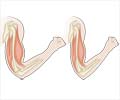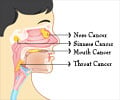Among individuals diagnosed with head and neck cancer, an AI-driven evaluation of sarcopenia could be conducted at regular intervals during treatment.

Development and Validation of an Automated Image-Based Deep Learning Platform for Sarcopenia Assessment in Head and Neck Cancer
Go to source). “Sarcopenia is an indicator that the patient is not doing well. A real-time tool that tells us when a patient is losing muscle mass would trigger us to intervene and do something supportive to help,” says lead author Benjamin Kann, MD, a radiation oncologist in the Department of Radiation Oncology at Dana-Farber Brigham Cancer Center.
‘Artificial Intelligence offers a rapid, automated, and precise method for evaluating muscle loss, referred to as sarcopenia, among patients diagnosed with head and neck cancer. #headandneckcancer #muscleloss #AI #deeplearning #AIinmedicine’





Head and neck cancers are typically treated with combinations of surgery, radiation, and chemotherapy. The treatments can be curative, but they also can have harsh side effects. Patients sometimes have trouble drinking and eating during and after treatment, leading to poor nutrition and sarcopenia.Sarcopenia is associated with an increased chance of needing a feeding tube, having a lower quality of life, and worse outcomes in general, including earlier death. “Muscle mass is a very important indicator of health,” says Kann. “People with more muscle mass are generally healthier and more robust.”
Doctors can assess muscle mass by analyzing computed tomography (CT) scans of the abdomen or the neck. CT scans of the neck are common and frequent for patients with head and neck cancer, giving doctors an opportunity to identify sarcopenia early and intervene.
But diagnosis of sarcopenia from a CT scan requires a highly trained expert to examine the scan and differentiate the muscle from other tissue. It is painstaking work and takes up to 10 minutes to complete. “The process is time-consuming and burdensome, so it’s not done regularly,” says Kann.
Harnessing Deep Learning for Sarcopenia Diagnosis
Kann and colleagues set out to use deep learning, a form of AI, to diagnose sarcopenia using CT scans of the neck. To train the AI model, they accessed clinical records and CT scans from 420 patients with head and neck cancer. An expert performed an assessment of muscle mass for each patient based on the CT scans and calculated a skeletal muscle index (SMI) score. The team used the resulting dataset to train the deep learning model to make the same assessments.“The AI model automatically delineates the muscle in the neck from other tissues,” says Kann. “The results are transparent. You can see the outline of the muscle as assessed by AI and verify it with your own eyes.”
Advertisement
Currently, doctors use body-mass index (BMI) as an indicator of a decline in health related to treatment. The team compared how well BMI and SMI predicted poor outcomes, such as earlier death or the need of a feeding tube. They found that SMI was a better predictor of poor outcomes, potentially making it a more valuable clinical tool.
That warning sign could trigger an intervention, such as a nutritional consult, supportive medication, or physical therapy.
“If we see muscle mass begin to decline, we can do something to prevent it,” says Kann.
The tool could also be used to guide treatment decisions up front. For instance, a patient who already has sarcopenia when diagnosed with cancer might fare better with gentler treatment than someone who is more physically robust.
For next steps, Kann and colleagues plan to apply the tool to scans throughout the course of treatment for patients in a clinical trial setting. They hope to learn more about how muscle mass changes during treatment and to learn how to use the information to guide treatments and interventions.
Reference:
- Development and Validation of an Automated Image-Based Deep Learning Platform for Sarcopenia Assessment in Head and Neck Cancer - (https://jamanetwork.com/journals/jamanetworkopen/fullarticle/2808141)















